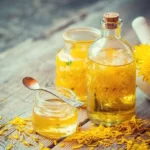Cilantro, with its vibrant green leaves and distinctive, citrusy aroma, is a beloved herb in kitchens worldwide. However, there’s more to this herb than just its foliage. As cilantro plants mature, they produce delicate and often overlooked treasures: cilantro flowers. These petite blossoms emerge when the herb bolts, signaling the end of its leafy phase. But what exactly are cilantro flowers, and can you eat them? In this exploration of cilantro’s lesser-known floral side, we’ll delve into the world of cilantro flowers, their culinary potential, and the delightful surprises they can bring to your dishes.
Cilantro and Its Flowers
To appreciate cilantro flowers fully, it’s essential to understand the herb from which they spring:
- Cilantro Overview: Cilantro, scientifically known as Coriandrum sativum, is a versatile herb used in a wide range of cuisines, from Mexican and Indian to Thai and Middle Eastern. Its leaves, known as cilantro leaves or coriander leaves, are famous for their fresh, herbaceous flavor.
- Bolting and Flowering: As cilantro plants mature and encounter warmer weather, they undergo a natural process known as bolting. During bolting, the plant redirects its energy from leaf production to producing flowers and seeds. This transition leads to the emergence of cilantro flowers, a delicate stage in the herb’s life cycle that often goes unnoticed by many.
Edibility of Cilantro Flowers
The question of whether cilantro flowers are edible is met with a resounding “yes”. In fact, these dainty blossoms are not only safe to eat but also offer a delightful and distinct flavor that complements cilantro’s leafy profile.
- Flavor Profile: Cilantro flowers share the citrusy, herbaceous notes characteristic of cilantro leaves, but they also bring their unique twist to the table. Their flavor can be more intense and slightly spicier than the leaves, making them an intriguing addition to various dishes.
- Culinary Safety: Cilantro flowers are entirely safe for consumption, provided they come from healthy plants that have not been exposed to pesticides or other harmful chemicals. They are a natural and flavorful extension of the cilantro herb.
- MADE IN THE USA & 100% TO GROW: All Back to the Roots Indoor Gardening Kits are backed by our 100% to Grow promise – if your kit doesn’t grow as described, we’ll replace it or provide a refund. We’re a small team based in Oakland, CA that’s committed to helping you grow.
- EVERYTHING INCLUDED TO GROW: Each Kitchen Herb Garden comes with organic plant-based soil, organic seeds, moisture-balancing biochar, & access to a free online STEM curriculum for kids. All you have to do is add sun & water. No chemicals, no transplanting, and no messy drainage holes.
- GREAT GIFT: The Kitchen Herb Garden has been ranked among the year’s top Gardening Gifts, Teachers Gifts, and Unique Gifts. It comes READY TO GIFT in beautiful packaging & will be sure to be THE gift of the year. Go ahead and treat yourself or a loved one today
- THE EASIEST WAY TO START A WINDOWSILL GARDEN: Growing your own fresh herbs at home has never been easier. With the new Back to the Roots Kitchen Herb Garden, you’ll be able to grow organic basil, cilantro, and mint right out of the can, year ‘round — no transplanting needed
- GROWS YEAR ROUND: Our cans are designed for indoor spaces, so you can have fresh herbs growing year ’round in any season – Spring, Summer, Fall or Winter
Culinary Uses for Cilantro Flowers
Cilantro flowers offer a world of culinary possibilities, adding both visual and flavor appeal to your dishes:
- Garnishes: Cilantro flowers make stunning garnishes for a wide range of dishes, from soups and salads to main courses. Their delicate appearance adds an elegant touch to your culinary creations.
- Flavorful Additions: Beyond their visual appeal, cilantro flowers contribute a burst of fresh, zesty flavor to your meals. Sprinkle them over tacos, grilled meats, or seafood for an extra layer of taste.
- Salads: Toss cilantro flowers into your salads for a pop of color and a subtle spicy kick. They pair exceptionally well with summer salads featuring fresh vegetables and herbs.
Harvesting and Using Cilantro Flowers
Harvesting cilantro flowers is a straightforward process, and incorporating them into your cooking is a creative endeavor:
- Harvesting: To harvest cilantro flowers, wait until they are fully open, typically when the plant has bolted. Gently pinch the flowers from their stems. Avoid taking too many flowers to allow the plant to continue producing.
- Cleaning: Give the harvested cilantro flowers a gentle rinse to remove any dirt or debris. Pat them dry with a paper towel.
- Storage: Cilantro flowers are best used fresh, but you can store them in the refrigerator for a short time. Keep them in an airtight container or a plastic bag with a damp paper towel to maintain freshness.
With these simple steps, you can enjoy the visual and culinary delights that cilantro flowers bring to your kitchen. Whether you’re looking to enhance the presentation of your dishes or infuse them with a captivating flavor twist, cilantro flowers are a versatile and edible gem waiting to be explored.
- Kit Includes: One net pot(with wick), one preseeded grow plug and one mason jar. Plant food is not included in this kit due to regulations. Recommend liquid plant food for vegetables available on Amazon.
- Start Growing: First remove the band and the net pot from the mason jar. Then add 2 cups(16oz) of water to the mason jar, and then place the net pot and the band back to the mason jar. Last, remove the plug cover in 7 days or when the seeds begin to sprout.
- Low Maintenance: This self-watering growing kit requires very low daily maintenance. The wick will pull water from the jar to the plant root which ensures the plants take enough water as they need, thus you will not need to water frequently. Just refill the jar when there is not much water left.
- Beautiful and Safe Home Decor: This artistic herb mason jar can lighten up any home. You can put it on your windowsill, your kitchen counter or anywhere you like. All the seeds are heirloom, non-GMO organic seeds. Certified organic by CCOF. We promise you can buy with confidence for you and your family!
- Fresh Herbs Every Day: Planting your favoriate herbs at home with this kit. Nothing is more exciting than having your own home grown fresh herbs every day. These delicious herbs will surely add richer taste to your dishes.
Recipes Featuring Cilantro Flowers
The culinary world embraces cilantro flowers for their unique flavor and aesthetic appeal. Here are some delectable recipes that showcase the versatility of these delicate blossoms:
- Cilantro Flower Salsa: Create a vibrant salsa by combining cilantro flowers with diced tomatoes, red onions, jalapeños, lime juice, and a pinch of salt. Serve it with tortilla chips or as a topping for grilled meats and fish.
- Herb-Infused Oils: Infuse olive oil with cilantro flowers to create a fragrant and flavorful oil. Drizzle it over roasted vegetables, use it as a dipping sauce for bread, or incorporate it into salad dressings.
- Cilantro Flower Butter: Blend cilantro flowers into softened butter and add a touch of lemon zest and salt. Spread this delightful compound butter on fresh bread or use it to elevate the flavor of grilled corn on the cob.
- Cilantro Flower Salad: Enhance your salads by tossing cilantro flowers with mixed greens, cherry tomatoes, cucumber slices, and a light vinaigrette dressing. The flowers add a burst of color and flavor to your salad bowl.
Cautions and Considerations
While cilantro flowers are a delightful addition to your culinary repertoire, it’s essential to be mindful of a few considerations:
- Allergies: Some individuals may have allergies or sensitivities to coriander, which is the seed of the cilantro plant. Be cautious when introducing cilantro flowers to dishes if you or your guests have known sensitivities.
- Pesticides and Chemicals: Ensure that the cilantro flowers you use for culinary purposes come from plants that have not been treated with pesticides or other chemicals. If in doubt, consider growing your own cilantro to have full control over its care.
- Moderation: As with any flavorful ingredient, use cilantro flowers in moderation. Their intense taste can easily overpower a dish if used excessively. Start with small quantities and adjust to your taste.
Conclusion
In the world of culinary exploration, cilantro flowers represent a hidden gem waiting to be discovered. Beyond their captivating appearance, these delicate blossoms offer a delightful burst of flavor and aroma that can elevate a wide range of dishes. From zesty salsas to herb-infused oils and vibrant salads, cilantro flowers lend their unique charm to the creative cook’s palette.
As you embark on your culinary adventures with cilantro flowers, remember to exercise caution regarding allergies and pesticide use. With responsible sourcing and mindful usage, you can savor the culinary delights that cilantro flowers bring to your kitchen, transforming your meals into colorful and flavorful works of art. So, embrace the culinary potential of cilantro flowers, and let your taste buds and creativity flourish.





